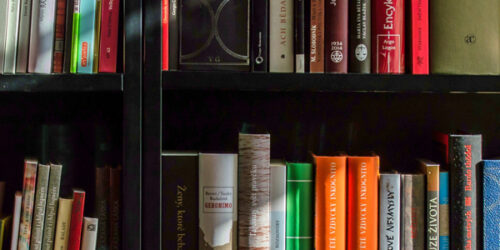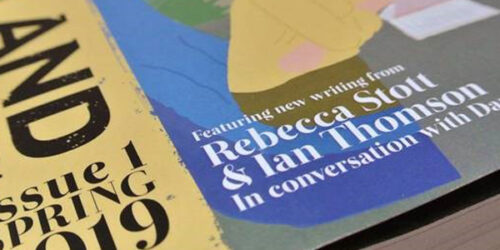
Want to perfect your process for writing creative non-fiction, or elevate your writing style? Maybe you’re making the move from fiction to non-fiction.
This comprehensive guide using interviews from The Writing Life podcast offers advice and guidance from writers and editors, often describing the obstacles they faced and how they traversed them in their own projects.
This page covers creative non-fiction inspiration, research, structure, narrative, point of view and much more.
1. Know thyself: are you a non-fiction writer?
Not everyone is suited to the type of writing they might want to do. It’s important to understand not only what interests us, but what we have an aptitude for. It can be valuable to find where these two meet.
Author and journalist Sonia Faleiro describes her own journey of self-discovery and self-actualisation: ‘After I wrote my debut novel, The Girl, I looked at it and realised, ‘wow, I’m not a novelist – what were you thinking?!’. I am so glad I realised that. Imagine attempting to put out more books and not knowing that that was not what I was meant to do.
‘I didn’t grow up with much non-fiction, so it wasn’t something I had imagined doing. Only later did I learn more about it.’
‘I didn’t want to follow the American cookie-cutter format of narrative non-fiction. It’s very gripping, but it’s quite formulaic. I wanted to take the basic tenets of narrative non-fiction and make it mine and adapt it to the kind of storytelling I was keen on.
‘When I lived in Mumbai, I started writing about communities that live on the edge of society. The trans community, the Hijra and the community of bar dancers. I’m a middle-class Indian, I’m not very interesting but I was interested in these others groups, so I write about these people in my non-fiction books.’
Listen to our J. Michael Straczynski on Becoming A Writer, Staying A Writer podcast.
2. Be brave
Creative non-fiction journal Hinterland co-editor Yin F. Lim says: ‘When we write from our memories and our life stories, there’s a temptation to gloss over things and leave out the difficult parts. But to write a memoir or a personal essay well, we need to interrogate the truth as we remember it, and write with honesty and candour to achieve an authentic voice that allows readers to connect with our writing.’
Filmmaker Josef Steiff says: ‘I see so many people edit themselves before they even get the story out. Get the story on paper/screen first. Raw, complicated, contradictory. Then in the rewriting, continue to be brave. Not reckless, but brave. I often find that when I read the piece after it’s finished, I feel vulnerable. I’ve even blushed sometimes when reading something aloud to others. For me, this is my evidence that I’ve cut as close to the truth as I can.’
Ed Parnell explains his own trepidation about tackling potentially upsetting subject matter in his autobiographical work, Ghostland.
‘It was difficult. I was writing about my parents who died when I was 17 and 18.’
‘It was difficult,’ says Ed. ‘I was writing about my parents who died when I was 17 and 18. I don’t tend to think about when they were in hospital and things. You don’t really want to go revisit those memories and feelings, but I felt I should do for this project.
‘I was like a story in an M.R. James story who’s digging into the past: you know they shouldn’t but they’re compelled to. That was tough. Because it’s upsetting, you think, ‘what’s to be gained from doing it?’ I’m pleased I did. It probably did me good to think about it. I don’t believe in that vacuous concept of ‘closure’. You can’t get closure. Sure, there was some catharsis, but it was also upsetting. I’d be writing this stuff thinking, ‘I’m not sure I should have written that’. On reflection, I think it was right to do.
‘I also thought, ‘If I don’t write about this, then no one will’. It felt like a sacred duty to try and bring my parents some kind of presence on a page – like I’m the last guardian of their memory. I wanted it to be about nicer memories, but I couldn’t avoid the more troubling elements of the story.’
Listen to Ed discuss Ghostland here.
3. Research and organise
Creative non-fiction is also referred to as narrative non-fiction. Finding, directing and building that narrative is essential. But it can be a challenge. Stories have a habit of growing arms and legs – often driven by our interest in the subject which can result in tangents, interlinking stories and goose chases.
Ed Parnell says there was ‘lots of reading’ for his book, Ghostland. But reading was only a part of his research.
‘When you’re researching a novel, there’s lots of reading. You want to know your setting, the characters and your period. If you’re writing about a public figure – especially someone who produced works of art, music, theatre, film etc. – you will need to review the cultural criticism. There were psycho-geographic elements in the book so I also did a lot of traveling around.’
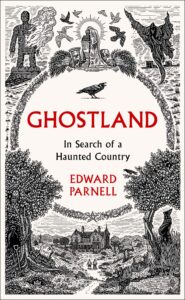 ‘I went to a lot of the places I’d been to when I was younger and it helped to recapture those memories. I also went back and looked at old family slides as well – to rediscover my own haunted family past.
‘I went to a lot of the places I’d been to when I was younger and it helped to recapture those memories. I also went back and looked at old family slides as well – to rediscover my own haunted family past.
‘I also had to visit places of which I had no memory that I’d been to when I was very small.
‘The good thing with research is that, because the chapters are chronological, I ended up researching it chronologically as well. I could break it down: this is the Welsh chapter, I will go to Wales and then come back and write about it. Even if the writing was a couple of months later.
‘I had a head start because I had done lots of the reading and watching movies. It wasn’t a faked interest. But reading them for pleasure is very different to reading them to try and say something interesting about them.’
Liverpool-born writer Peter Goulding says: ‘Go and interview people and let them talk. It is not a conversation, more of what they say and think should be on the tape than your own questions or opinions. I’ve just recorded an interview with a tree surgeon: he spent five minutes describing a smell. I couldn’t have written anything like it from my own mind, not without experiencing it myself. The next trick is welding those bits of interview into what you want to write. They need to fit and they need to have a strong join. Then you need to polish out the weld, so the reader can’t see the join. Craft and graft.’
Sonia Faleiro is a journalist and author of creative non-fiction. She explained her process for distilling the vast amounts of information she gathered for her 2021 book, The Good Girls: An Ordinary Killing, in The Writing Life podcast. The book explores the death of two girls in rural India.
‘It was a big case in India. It was all over the news so I had lots of information; I could locate myself and figure out who I needed to speak to.
- Family tree
‘The first thing I did, was to make a family tree’ says Sonia. ‘There were two girls from two families, but they lived in a joint family setting of 18 people.
- Sources
‘Then I made lists of names, any name that I came across: police, court, family, investigator, neighbour.
‘Then I got in touch with as many reporters as I could, those who had reported on the story as it happened – TV, papers – those who had gone to the village within a day or so of the children being found. I reached out to them for contacts and I also asked them what they thought. ‘What is your sense of the village and the story and the people? A journalist’s intuition may not be something that they put into their reporting but is nonetheless valuable. I remember two journalists saying to me, ‘yeah, something’s up, I don’t know what… but if you find out, let me know’.
‘Then you start drawing your own charts and making your own notes. Things get lost in translation; a mistake that gets made in an early report ends up being repeated, so you correct the information you have.
‘Then I went to the village and spoke to people. I recorded every conversation – hours of it.’
Andrew Kenrick says: ‘While you might not plan to extensively pepper your writing with footnotes or references, all the same, keep a track of where you’ve found your information. This might be just to offer a credit or to supply a bibliography, but it can also prove essential if you find yourself needing to return to the same subject in the future – and you’ll be surprised at how easy it is to forget where you’ve read something further down the line! There’s all manner of reference managers out there – I use Zotero but there are loads available freely.’
- Primary research
‘In the village, I also took notes. The recording only captures so much so I would write notes: background sounds and wildlife; what does it look and smell like? What are they wearing? What do bare feet look like?’
- Secondary research
‘I also got information from online archives, for example, what the village used to be like.
‘Not too long ago, during the monsoons, the village would flood, so people would have to use boats to get from their homes to the fields. That gives you a sense of where people have come up from. The last generation needed to use boats because of how poorly the drainage worked. Now things have changed, they have bicycles and motorbikes and, vital to the story, is that they use modern devices like mobile phones and social messaging.
‘While focusing on the present, you need to delve into the past to figure out what led to the current events.’
- Get help
‘I took assistance when I needed it. Early on, I worked with a fact checker and worked with lawyers and translators. Although I speak fluent Hindi, many people in the village speak Braj Bhasha [regional dialect] – I can understand it but not well enough to translate it perfectly.’
More on research
- Podcast: Research for writing with Megan Bradbury
- Podcast: Kate Mosse on the Women’s Prize, Discoveries and research
- Podcast: Writing creative non-fiction with Sonia Faleiro
- Podcast: Research, editing & planning novels with Stuart Turton
- Podcast: Researching True Crime with Stephanie Scott
- Blog: Researching a novel: moving beyond what you know
4. Write to know
Different writers have different approaches – some plan and write meticulously, turning in a perfect first draft; others write and revise until the story and the words come together.
Writing creative non-fiction, as opposed to fiction, may impact this – real events being fixed, even if the book’s narrative can change.
‘The secret to getting something written is to write.’
Sonia Faleiro says writing helped her discover the narrative.
‘I had between the 3,000 pages of documents and hundreds of hours of interviews. I felt like I was looking for a needle in a haystack. And I was buried under the haystack. I just needed to remind myself, ‘it’s fine, it’s ok to feel like this, just continue to work on this and one day, it won’t be like this. I will have figured it out’. That’s the secret. The secret to getting something written is to write. Even those people who think that if left to their own devices they would just research until the end of time, they wouldn’t. Finally they will get it.’
As Ed Parnell says: ‘It still comes down to sitting in a room, staring at a screen and typing.’
5. Take notes
Justin Kern says: ‘Simply: you must write a journal. Every day. Even if it’s two sentences about the bathroom, or breakfast, or a slight at work. And you must write what is real, to you, as long, silly, rote and deeply as you can. This ritualistic dedication to churning over your internal world in a journal will give you agency over the ultimate story of your own world, as well as those outside of it that you hope to tell.’
Listen to our Lucy van Smit’s A Writer’s Journal Workbook podcast. Lucy is an award-winning author, a screenwriter, and an artist.
Hinterland co-editor Yin F. Lim says: ‘Whether on paper or screen, get into the habit of recording your moments, thoughts and emotions. Journalling provides valuable raw material for writing from your life, but re-reading what you’ve recorded also helps bring you back to that moment in the past. It enables you to remember details and write with an immediacy that’s not as easy to replicate from our often unreliable memories.’
6. Get inspired
Whether you’re writing fiction or non-fiction, inspiration can come from anywhere. However, for the latter, it is very often driven by the very pursuit of the interest. Writer and NCW tutor Ed Parnell explains the genesis of his creative non-fiction work, Ghostland: In Search Of A Haunted Country.
‘I was putting off writing a second novel. I had some ideas, one of which was to have the Victorian ghost story writer, M.R. James as a bit part.
‘I was looking into that and I visited the place where James grew up – a spooky little village called Great Livermere outside Bury St Edmunds. I took lots of pictures and when I got home, I wrote a blog about it.
‘An editor at Harper Collins saw it two months later and emailed me, asking whether I’d ever thought about writing a non-fiction book on the subject. I went down to see him and found that we had a shared love of trashy old 60s and 70s horror films. He invited me to put a proposal together. I had to think, ‘Would I like to write about this?’ And at that point, I thought, ‘yes, I do’.
More on inspiration
7. Search for the truth
It is said that if the police ask three people what happened at the scene of an accident, they will get three versions of events. How can we ensure that we get to the truth of our story?
Sonia Faleiro’s investigation into the death of two girls in India resulted in various ever-changing stories. Here she describes how the combination of social rules, mores and pressure made her hunt for the truth even harder.
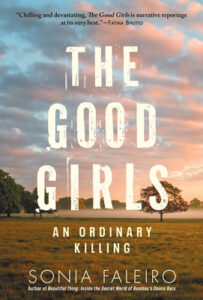 ‘Everyone had a different story about the night girls went missing. Some people said they saw them talking to a man from the next village, someone else said there were thieves in the village, another said they were on the other side of town completely.
‘Everyone had a different story about the night girls went missing. Some people said they saw them talking to a man from the next village, someone else said there were thieves in the village, another said they were on the other side of town completely.
‘A search ensued with torches, but in total silence, because the families didn’t want to create fear in the village because it would raise questions about why the girls had been out to begin with.
‘There are dozens of people running round in the fields, so by the time I arrive to capture the story, there are dozens of versions of the story to untangle.
‘A lot of people continued to change their story over the years for various reasons and I’m quite sure that if I went to the village tomorrow, I would find someone who would change their story again. It could continue forever. In a village like that, you’re not just answerable to yourself, not even your family, you are answerable to the community. So you have to be careful, not just about how they behave, but what they say about the behaviour of others because it can have deadly consequences for them.
‘Figuring out who was telling the truth and who wasn’t, became the most important thing. Persistence is the key. I kept returning back to the village and would report around people. If someone is telling you something that is clearly not true, you can keep asking them the same question over and over but it will only bring you grief. It won’t endear you to them. Alternatively, you can talk to somebody else: fathers, mothers, uncles, cousins, friends.
‘That is how I was able to build the narrative, by crosschecking information. It’s important not to take people at their word right away. Not only must they earn your trust, but you must earn theirs. It works both ways.’
‘It’s not my job to tell the story that they want me to tell. I’m not even telling the story that I want to tell. I’m telling the story that is.
8. Who’s story is it?
The point of narrative or creative non-fiction is that it’s not just a reference book. The facts hang from someone’s story, seen through their eyes. As such, knowing lots about the subject, person or time isn’t enough, you need to bring this to life through one or more people’s stories.
Author, Ed Parnell had been invited by Harper Collins to pitch an idea they’d discussed – to write a non-fiction book about ghost story writer M.R. James.
‘The more I redrafted it, the more I edged towards, seeing things from Fodor’s point of view.’
‘I had decided that I would like to write a book about him. So I thought, if I did want to write it, how would I do it?
‘I was conscious that I’m not an academic who specialises in this field. there must be lots of people who are more qualified than me to write this.
‘I knew quite a lot about it and was quite interested in the subject, but I wanted to bring something of myself to it. I thought about my own family history and the more I thought about it, the more I thought of other writers I’d like to explore, how their lives tied in to places I’d been to on holiday as a kid, and how that tied into my own family story. So the story is told through me as I explore and rediscover my childhood memories, those ghost story writers I was reading, and their relationship to the places I’d been.’
Kate Summerscale, the award-winning author of The Suspicions of Mr Whicher, describes how the point of view developed during the writing of The Haunting of Alma Fielding: A True Ghost Story.
‘I had done three years of pure research. I’d worked out how to tell the story: the structure of the story and put it together while continuing to go back and forth with the research.
‘The shape of the book and the storytelling was hard to work out.
‘The more I redrafted it, the more I edged towards, seeing things from Fodor’s point of view. In a way, Fodor wanted to explore everything I wanted to explore. Although my perspective is different because I’m in a different point in history, he could still allow me access to everything I needed. I realised that it worked better than putting Alma’s experience at the centre or being detached from both of the main characters altogether. Although it’s not exclusively from his point of view, the grounding in seeing things as he would have seen them, helped me ground myself in that historical moment – and the reader can get their bearings from him.
‘That decision about perspective and point of view was what made it all start to work as a story.’
More on characters
9. Don’t forget to read!
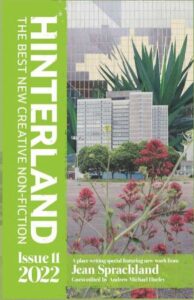 Hinterland editor Andrew Kenrick says: ‘I’m always reading nonfiction even during the writing stage of a project; I tend to write biography rather than memoir. Sometimes it will be for direct research, other times I’ll be looking for stylistic inspiration, and more often it’s entirely unrelated. But it’s all fuel for the fire, and often the inspiration for a thorny problem can strike from the unlikeliest source.’
Hinterland editor Andrew Kenrick says: ‘I’m always reading nonfiction even during the writing stage of a project; I tend to write biography rather than memoir. Sometimes it will be for direct research, other times I’ll be looking for stylistic inspiration, and more often it’s entirely unrelated. But it’s all fuel for the fire, and often the inspiration for a thorny problem can strike from the unlikeliest source.’
Hinterland editor Freya Dean says: ‘I find I can’t read non-fiction during a period of intensive memoir writing. It’s not that I’m afraid I’ll subconsciously copy from other writers, but just that my thought stream gets disrupted and I can’t keep the flow of my own work. Instead, I read fiction (just re-read Jennifer Egan’s brilliant A Visit From the Goon Squad), YA fiction (my kids have got me into Philip Reeve), poetry (currently Lieke Marsman), and those big ‘coffee table’ art and fashion books, when I can afford them.’
10. Go off track
Josef Steiff says: ‘Tangents can be your friend. Sometimes when I’m writing, my mind will start drifting. I’ve found that it can be productive to follow these tangents to determine if they are actually associations or resonances that deepen and need to be interwoven into the main story.’
11. Build a roadmap
Ed Parnell explains: ‘With non-fiction, you have to create this big pitch document for the publisher. I had created a 50-page, chapter-by-chapter document, so I had thought about the structure and had a roadmap.
‘You have to write that stuff to know it needs to be removed.’
‘When I came to write it, some of those chapters fell by the wayside and new things came in: new books and films I wanted to include, new parts of my own travels within the book. Having a roadmap was good, even if I meandered from it.
‘My first draft was 140k words. I cut it down to 100k. You have to write that stuff to know it needs to be removed.’
12. Structure: One size doesn’t fit all
‘Writing non-fiction was a new process for me,’ explains Ed Parnell, ‘so I researched other non-fiction books. I physically analysed them: how long the chapters were. Is a 40-page chapter too long?
‘You look for patterns but there are none because everyone does it differently. You’re learning as you go. I suspect that every book a writer writes, you feel like you’re starting over again.’
13. Raid the novelist’s toolkit
Andrew Kenrick says: ‘One of the things that often defines the best creative non-fiction that we receive at Hinterland is that it applies the tools of a novel writer to real situations and settings: flashbacks, starting in media res, dialogue, rich descriptions of character and plenty of texture in the writing – colours, sounds and smells.’
14. Facts vs fiction
 Kate Summerscale, explains how she balanced the marshaled the facts against the narrative she was creating in her book, The Haunting of Alma Fielding: A True Ghost Story.
Kate Summerscale, explains how she balanced the marshaled the facts against the narrative she was creating in her book, The Haunting of Alma Fielding: A True Ghost Story.
‘I always keep the narrative in the foreground. It’s almost the reverse of normal where the important events take place in the foreground and the trivia is at the edges. It’s inverting that.
‘So the story is an apparently silly story about a poltergeist and a woman in Croydon in the 1930s and an eccentric ghost hunter. Instead, it becomes a thing I take very seriously – it’s driving the story forward.
‘Almost off-stage, national and international events are taking place – Hitler is invading Austria.
‘But events aren’t just to give context and colour. As I write, I’m trying to work out how they connect to the story I’m telling and why I’ve picked these particular fragments to drop in. They have to earn their place, as shadows to my story, even though they are these huge and momentous world events that changed things for millions of people. I need to make them pay off as motifs in the particular story I’m telling and I hope that that in turn will give some extra resonance to the story. I work how these things fit together as I go along, I don’t know in advance.’
15. Develop an Editor’s eye
Hinterland editor Freya Dean says: ‘Try to have a ‘fallow’ period between writing projects where you read intensively and think hard about what you’re reading. The keystone of most non-fiction creative writing courses is exactly this: reading great writers to understand why their writing shines, which then helps you to develop a critical, editorial lens that you can apply to your own work. As far as non-fiction titans go, Joan Didion’s essays, and those by Gay Talese (see especially Frank Sinatra Has A Cold & Other Essays) are a great place to start. Take one short passage and really dissect it, right down to the last full stop.’
16. Share your work
Freya says: ‘Take every opportunity to have your non-fiction critically (and constructively) workshopped. Even more than a way to gain feedback, structured discussion is invaluable for the perspective it brings when you’re working with material drawn from your own life. It helps build that sense of ‘remove’, of feeling that what you have written exists as something in its own right, distinct from yourself and your inner world. This in turn helps you to better craft and evaluate the work as you are writing.’
17. Shelve it!
Freya says: ‘So many successful writers I know consider this an essential part of the writing process. Whether they’ve reached a point where they’re stuck with a manuscript, or are reasonably happy that they’ve nailed it, they print a hard copy and put it away in a drawer, and then they don’t look at it for several weeks. This is helpful for all writing, no matter your subject, but is especially key when you’re writing anything that draws heavily on your own experience. When you take the text out again and read it with fresh eyes, you’ll instantly see the flaws in the writing, whether great or (hopefully) small.’
You may also like...
17 tips for writing creative non-fiction
Writers and editors give their advice on writing non-fiction and tackling its challenges.

30th July 2022
How to craft creative non-fiction
11 truly useful tips from writers, hand-picked by the Hinterland editors

28th April 2020
An introduction to creative non-fiction
Five seminal books chosen by Hinterland co-editor Freya Dean

17th June 2019




